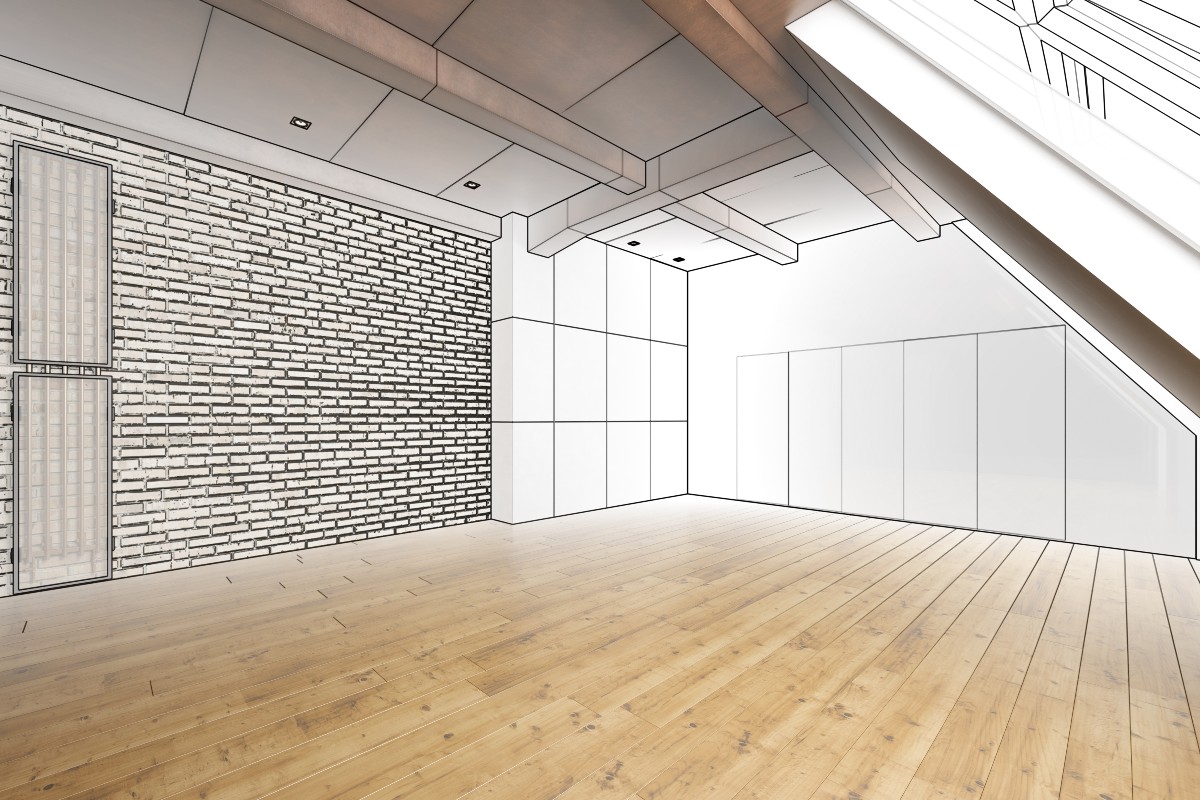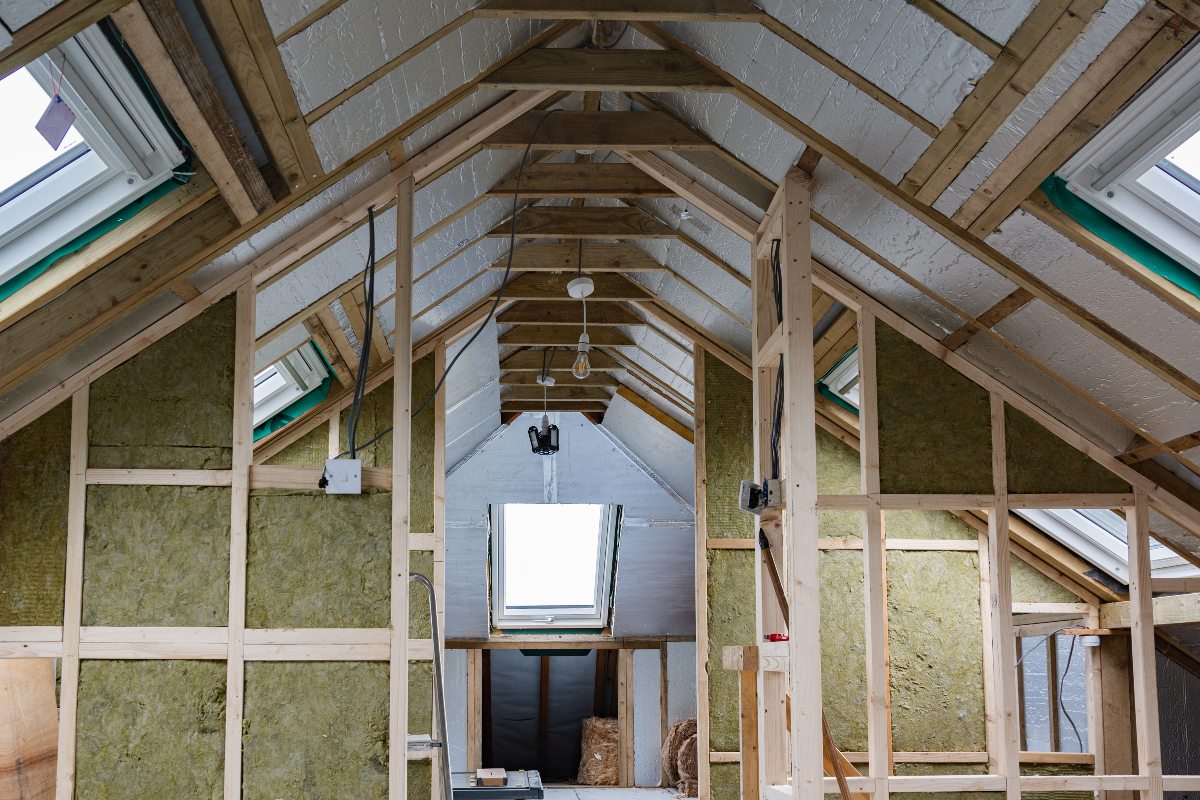A loft conversion is a fantastic way to unlock extra living space in your home, transforming unused attic space into a functional living space like a bedroom, office space, or storage space. However, before embarking on a loft...
A loft conversion is a fantastic way to unlock extra living space in your home, transforming unused attic space into a functional living space like a bedroom, office space, or storage space. However, before embarking on a loft conversion project, one critical question arises: do you need planning permission?
In this guide, we’ll explore when planning permission is required, how permitted development rights apply, and the role of building regulations in ensuring a safe and compliant converted loft. We’ll also cover loft conversion costs and other considerations to help you plan your loft space transformation.

What Is a Loft Conversion?
Transforming Your Attic
A loft conversion turns the often-neglected roof space into habitable space, adding value to your home and creating more living space. Whether you’re envisioning a cosy bedroom with roof windows or a spacious master suite with dormer windows, a loft conversion can tailor your existing house to your needs. The process involves modifying the existing roof or roof structure, which may necessitate careful planning to comply with legal requirements.
Exploring Loft Conversion Types
There are several loft conversion ideas to suit different homes, each with unique implications for planning permission:
-
Velux Loft Conversion: This option involves adding roof windows to the existing roof slope, making it a cost-effective choice that often falls under permitted development.
-
Dormer Loft Conversion: Extends the existing roof to create additional floor space and headroom, incorporating dormer windows for natural light. Common in semi-detached houses, a flat roof dormer may sometimes require planning permission.
-
Hip to Gable Loft Conversion: Replaces a sloping hipped roof with a vertical wall to maximise usable space, often used to create extra space in homes with limited roof space.
-
Mansard Loft Conversion: Alters the roof structure to create near-vertical walls, offering significant floor space but typically requiring planning permission due to its impact on the existing roof line.
-
Modular Loft Conversion: Utilises prefabricated sections for a new loft conversion, streamlining the construction process while still subject to regulatory checks.
Understanding these options helps determine whether your loft conversion needs planning permission.
Understanding Planning Permission
What Is Planning Permission?
Planning permission is formal approval from your local authority to carry out building work that significantly alters your home’s appearance or use. For a loft conversion, it depends on how much the project changes the existing roof or affects the neighbourhood. Many loft conversions fall under permitted development rights, which allow certain modifications without needing formal approval, but there are strict conditions to meet.
Permitted Development Rights
Permitted development rights enable homeowners to undertake loft conversions without planning permission, provided the project adheres to specific guidelines. For example:
-
The additional roof space must not exceed 40 cubic meters for terraced houses or 50 cubic meters for semi-detached houses.
-
The new loft conversion must not extend beyond the existing roof slope at the front of the house.
-
Materials used should match the existing house to maintain aesthetic consistency.
-
No verandas, balconies, or raised platforms are allowed without permission.
-
In areas of outstanding natural beauty or conservation areas, permitted development rights may be restricted.
A Velux loft conversion or simple rooflight loft conversion often qualifies under permitted development, while a mansard conversion or hip to gable loft may not due to their impact on the roof structure.
When Planning Permission Is Required
You’ll likely need planning permission if your loft conversion exceeds permitted development limits or involves significant structural alterations, such as:
-
Extending beyond the existing roof slope or altering the roof pitch in a way that changes the house’s appearance.
-
Building a mansard loft conversion or dormer loft that significantly alters the existing roof line.
-
Modifying a party wall in a semi-detached house, which may also require a party wall agreement.
-
Undertaking a loft extension in a conservation area or an area of outstanding natural beauty, where stricter rules apply.
Always check with your local planning authority before starting work to avoid legal issues or costly corrections.

Building Regulations and Other Requirements
Meeting Building Regulations
Even if your loft conversion falls under permitted development, it must comply with building regulations. These cover fire safety, structural integrity, insulation for energy efficiency, and ventilation. For example:
-
Floor joists and existing ceiling joists must be reinforced to support the new floor space.
-
Fire SAFETY regulations require escape routes, fire-resistant existing doors, and smoke alarms.
-
Insulation, such as the warm roof method, ensures energy efficiency and prevents heat loss, unlike the less effective cold roof method.
A building control officer will inspect the loft conversion project at various stages, so compliance is non-negotiable. Hiring a structural engineer can ensure your roof structure meets these standards.
Party Wall Agreements
If your loft conversion affects a party wall shared with a neighbour, as is common in semi-detached houses, a party wall agreement is often required. This legal document informs neighbours of the work and protects both parties from disputes. For instance, a dormer loft conversion or a hip-to-gable loft that modifies the party wall requires neighbour consent. A specialist loft conversion company can handle this process, but you’ll need to manage it yourself if doing a DIY project.
Role of a Structural Engineer
A structural engineer is often essential for loft conversions, especially those involving structural alterations, such as a mansard conversion or a hip-to-gable loft. They assess the existing roof and floor joists to ensure the structure can support the new living space. Their expertise helps avoid costly mistakes and ensures compliance with building regulations, particularly for complex designs such as flat roof dormers.

Costs and Considerations
Loft Conversion Costs
The loft conversion cost varies by type and complexity. A Velux loft conversion typically costs £15,000–£25,000, while a dormer loft conversion or a hip-to-gable loft conversion ranges from £30,000–£50,000. A mansard loft conversion can cost £50,000–£80,000 due to extensive structural alterations. Additional expenses include structural engineer fees, party wall agreements, and building control inspections. While permitted development can save on planning permission costs, non-compliance can lead to fines or rework.
Time and Disruption
A loft conversion project can take weeks to months, depending on its scope. A modular loft conversion is quicker due to prefabrication, whereas a mansard conversion takes longer due to the changes required to the roof structure. Construction may disrupt your home, especially if it involves reinforcing existing ceiling joists or installing dormer windows. Loft conversion specialists with strong project management can minimise disruption, but careful planning is key.
Impact on Your Home
A loft conversion adds value to your home and creates more living space, but it’s not without challenges. For example, a dormer loft can maximise space and flood the room with natural light, but it may alter your home’s appearance, triggering planning permission in some cases. Similarly, a hip-to-gable loft can create a spacious bedroom but may require a party wall agreement. Weigh these factors to ensure the project aligns with your goals.
When Planning Permission Isn’t Needed
Leveraging Permitted Development
Many loft conversions, such as Velux loft conversions or simple dormer conversions, fall under permitted development rights, making them straightforward and cost-effective. These projects adhere to volume limits, utilise materials that match the existing house, and refrain from altering the existing roof slope at the front. For example, adding roof windows to create a rooflight loft conversion typically doesn’t require planning permission, provided headroom and roof pitch are adequate.
Consulting Your Local Authority
Even if you believe your loft conversion qualifies for permitted development, it’s wise to consult your local planning authority. They can confirm whether your new loft conversion meets the criteria or if restrictions, such as being in an area of outstanding natural beauty, apply. A specialist loft conversion company can also guide you through this process, ensuring compliance and avoiding delays.
Is It Worth Navigating the Regulations?
Benefits of Compliance
Complying with planning permission and building regulations ensures your converted loft is safe, legal, and adds value to your home. A well-executed loft conversion, whether a dormer loft or mansard conversion, creates usable space and enhances your home’s appeal. For instance, a Velux loft conversion with natural light can transform a cramped attic into a bright office space, while a hip to gable loft offers enough floor space for a master suite.
Risks of Non-Compliance
Failing to secure planning permission or meet building regulations can lead to serious consequences, including fines, legal disputes, or the need to undo work. For example, altering the existing roof line without approval could result in enforcement action, while weak floor joists could compromise fire safety. Hiring loft conversion specialists or a structural engineer reduces these risks, ensuring a perfect loft conversion that meets all requirements.

Conclusion
Determining whether you need planning permission for a loft conversion depends on the project’s scope, your home’s location, and permitted development rights. Simple Velux loft conversions often avoid the need for permission, while complex mansard conversions or hip-to-gable lofts may require it. Regardless, all loft conversions must comply with building regulations to ensure fire safety, energy efficiency, and structural integrity.
By consulting your local authority and possibly a specialist loft conversion company, you can navigate party wall agreements, planning permission, and other requirements to create a cost-effective, compliant converted loft that adds more living space and value to your home.

The Conversion Guy - A Professional Bathroom Fitter serving Derbyshire & Staffordshire
Are you ready to take the plunge and transform your bathroom into an oasis? Well, look no further! The Conversion Guy is committed to providing you with a bathroom renovation experience that is unparalleled.
With over 40 years of experience in bathroom remodelling, we are looking forward to helping you create the most amazing bathroom of your dreams! We love talking bathrooms, so be sure to get in touch today or book a free consultation and start your journey towards creating the perfect bathroom retreat!
From the Learning Centre
Explore our resources and learn about pricing, bathroom refits, kitchen kitchen renovations, loft conversions and many other home improvements in our Learning Centre




